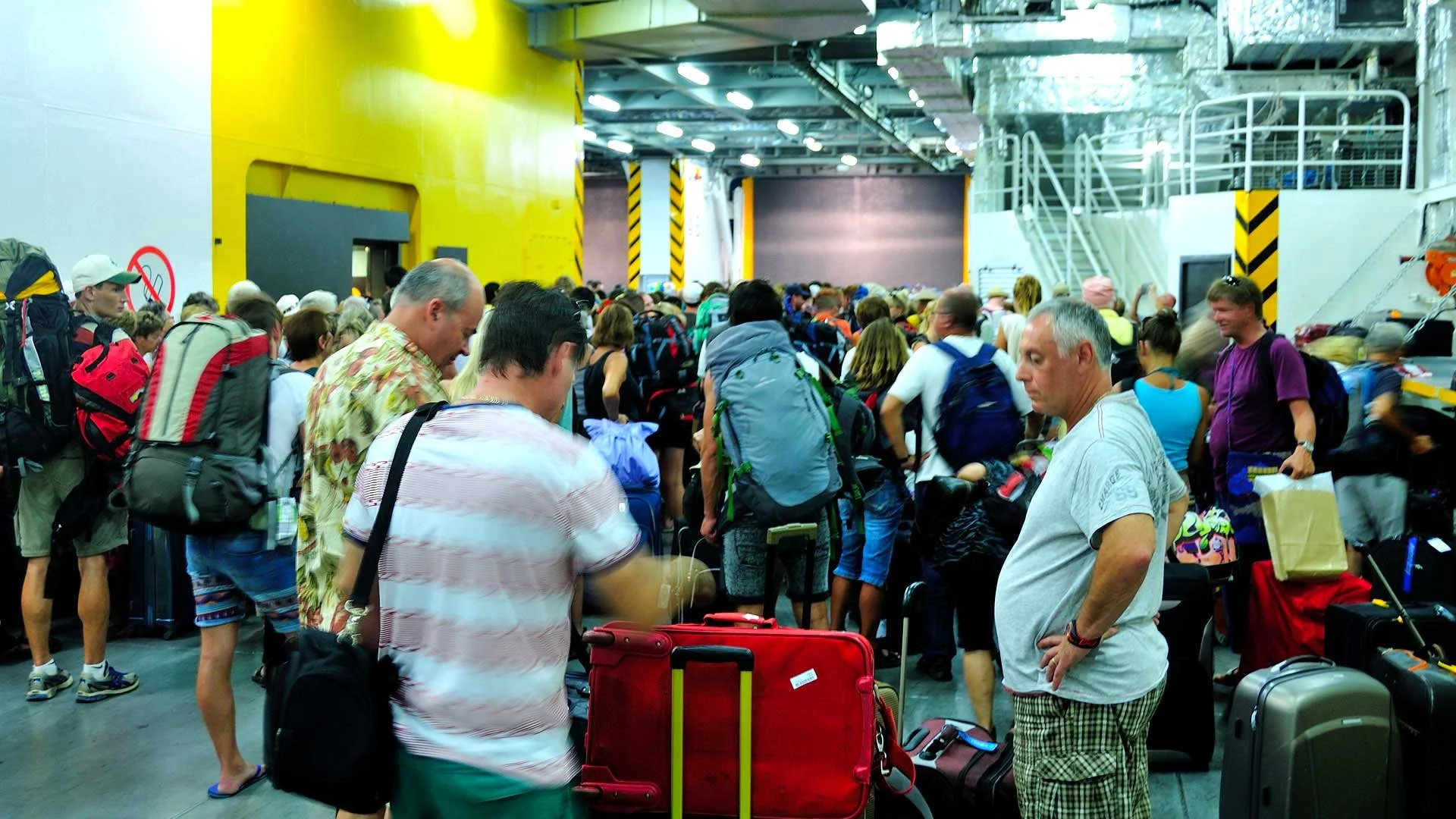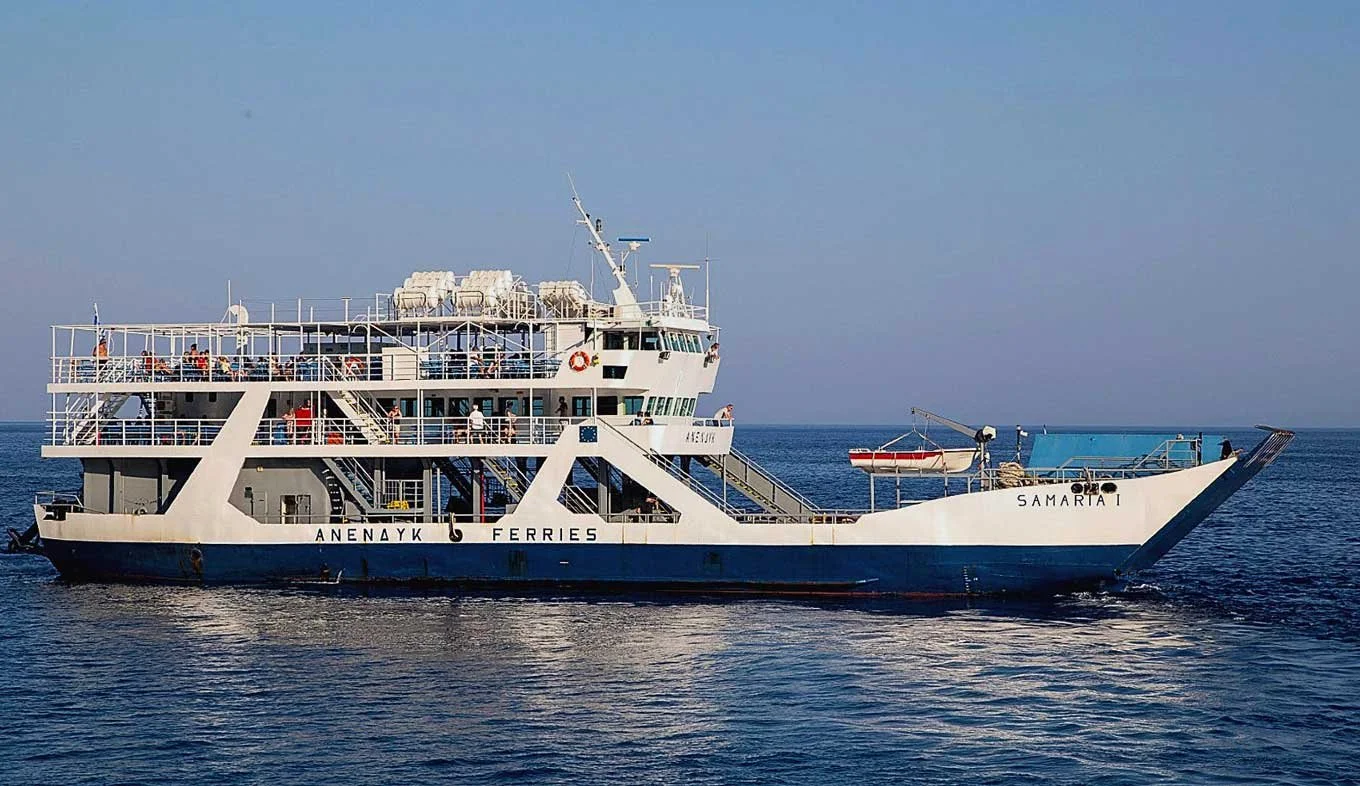
Greek Island Hopping
Land was created to provide
a place for boats to visit
Brooks Atkinson
Athens 3 ports
Piraeus
is the largest and busiest port of Athens and the most popular departure point/port for Island hoppers and tourists. Ferries to all Aegean Islands, Crete, and ports of Peloponnese.
Located 12 km from the center of Athens. Piraeus can be accessed by the metro (green line), bus and taxi.
Piraeus Port Authority has good gates and destinations plan here.
Allow yourself a good 60 minutes to find and board your ferry. Secure luggage storage is available via regular luggage deposit in the passenger terminal building.
Athens 3 ports
Rafina
ocated 27 km from central Athens on the west coast of Attica.
Rafina port is also the second departure point/port to the Greek Islands.
As Rafina is the closest port to the International Airport of Athens, 17.5 km it is mostly chosen by visitors who want to travel directly to the Greek islands, without spending time in Athens.
Rafina is connected to the airport of Athens with regular buses (departure every 30-60 min) approximately 25 minutes' journey.
The port is located below Rafina town’s main square.
Athens 3 ports
Lavrio
Lavrio is about 60km from the centre of Athens and approximately 25km from Athens Airport.
Lavrio port authority information here. To date Lavrio is a small, commercial port.
raditional the ferry port for Kea island, but today the Cyclades Island of Kythnos also have ferry service with Lavrio port. Other Islands to be served are some of the remote Eastern Aegean Islands.
Photo by The original uploader was Apanag at Greek Wikipedia - Transferred from el.wikipedia to Commons by Alaniaris using CommonsHelper. Attribution
Greek Islands
Greece boasts between 1,400 and 4,000 islands—with about 166 permanently inhabited (Island number varies)
For Island Hoppers there are just under 80 islands connected by regular ferry, fast ferry, or hydrofoil. Approximately Another 40 + islands are visited by tour-beach boats.
The remaining inhabited islands being occupied by odd monks, goat herds and the occasional shipping billionaire.
The Greek Islands fall into groups.
The Cyclades Islands the most popular followed by Dodecanese Islands - Crete - Saronic Gulf Islands - Northern Aegean Islands - The Sporades Islands - Ionian Islands - Evia island
Before you travel
Ferries are usually reliable, but the service does depend on weather conditions. It is always a good idea to return to your flight destination at least a day or two before your flight home to allow sufficient time in case of bad weather or other delays like seamen, harbour ground staff, strike actions.
Ferry Seasons
The Greek ferry system is not actually geared towards moving visitors between islands it's preliminary exists to ferry local Greeks between the islands and Athens.
Low Season from October to early June. Ferry activities are at a reduced level. Ferries reliability during the low season might decline, partly due to poorer sea conditions, (storms as late as the middle to the end of May that will leave ships port bound for 24 hours).
High season from (middle) June to (late) September. The summer tourist influx is substantial but the high season is, in fact only around 14 weeks. The tourist peak season running for 5-6 weeks, last week in July to early September.
Greek Ferries sailing the Greek Seas
Types of Greek Ferries
Most of the large Greek conventional domestic ferries (carrying hundreds of passengers, goods and vehicles) operate out of Piraeus (Athens) mainly, providing daily island services. (picture Blue Star Ferries leaving Parikia port, Paros)
Fast ferries Equipped with the most modern equipment and facilities to ensure a comfortable journey for its passengers, Fast Ferries was established in 1989 and sail from the port of Athens/Rafina to Andros, Tinos and Mykonos. (picture Fast Ferry dock in the port of Andros)
High-speed ferries are very common. These vessels are smaller than conventional ferries and are able to travel at much higher speeds. High-speed reduce travel time between ports and are often used for shorter trips between islands. (picture Vodafone Catamaran high speed vessel arriving Koufonissia Island) Most are classed as "High Speed" vessels. Offering a fast air-conditioned crossing in flat seas. Fares are normally close to double regular ferry prices. For high season it’s recommended to book ahead and in good time before your departure date.
Hydrofoils (known in Greece as Dolphini) There are very few of these craft now operating in Greek sea. Very much a fair weather, calm sea craft. A few old craft are Russian origin. Picture Common craft Saronic Gulf Islands departing Athens/Piraeus port.
Landing Craft Ferries in shelter waters where car ferries are needed on short haul routes. Example Pounta/Paros - Antiparos. They carry a few vehicles and passengers on cabin deck. The larger landing craft ferries Southern Crete. Picture Anendyk Seavays Crete
Check timetable, availability and and prices
Book your Simple trip or Island Hopping
with Ferriesingreece

Be aware
Rapid Ferry turn around
Your embarkation and disembarkation
are normally (usually) via the stern car door. You are asked to embark down to the car deck before the ferry has docked, collecting your luggage, hold your kid's hand and so on.
Caught in a pushing crowd of people (locals, families, backpackers) and even cars this can become an unfamiliar moment.



